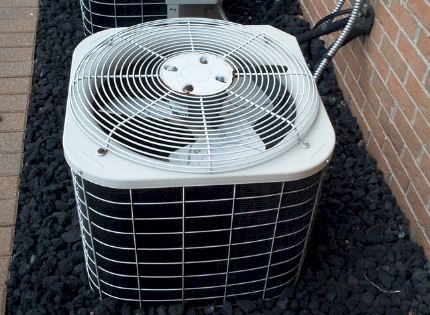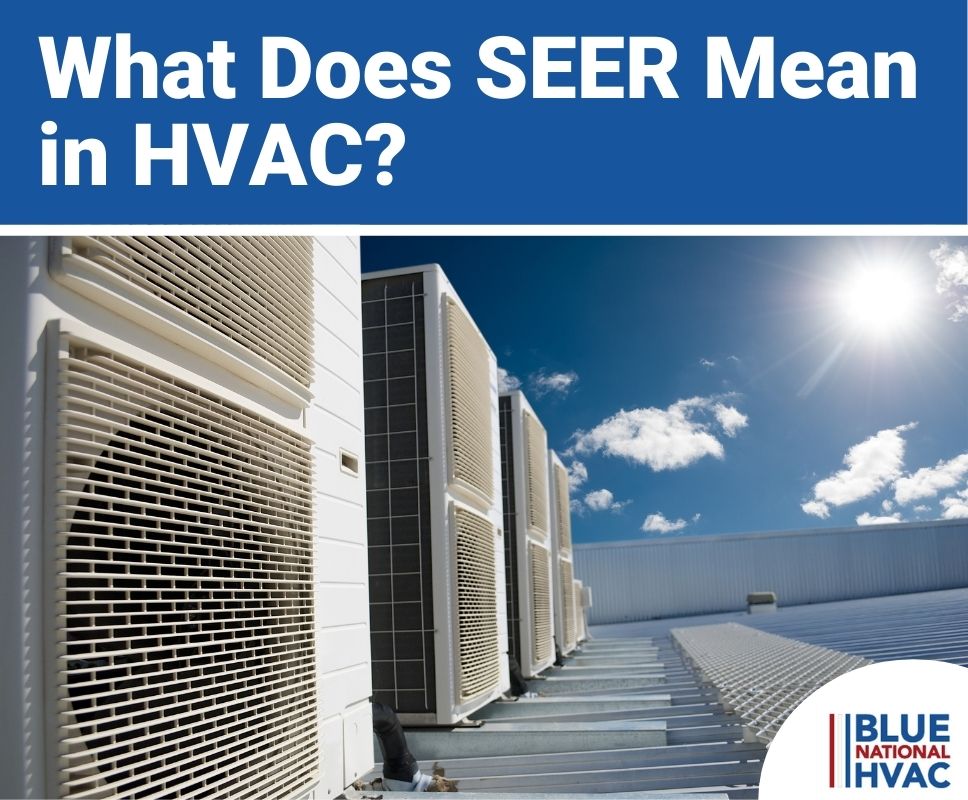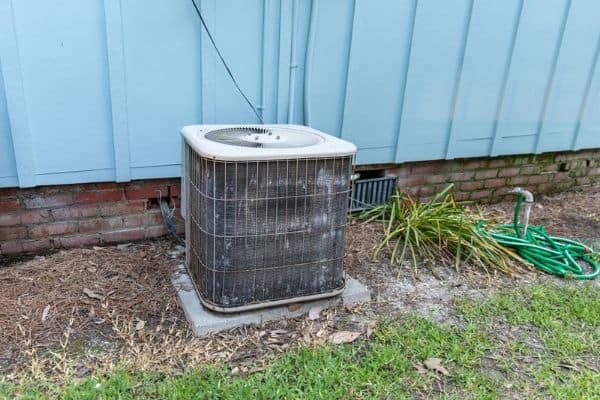Contents (Click To Jump)
What Does SEER Mean in HVAC?
You might have noticed that all air conditioning systems have the word “SEER” in their description preceded by a two-digit number, such as “15 SEER.” As such, you’re probably wondering exactly what SEER means.
SEER is an acronym for Seasonal Energy Efficiency Ratio, and it is a measure of efficiency for all air conditioning systems. More specifically, it is the ratio of its cooling output over the energy it uses over the entire cooling season.
Higher SEER ratings are better, meaning they use less energy to cool your home than lower SEER rated AC units.
The SEER ratings of air conditioning systems are an essential aspect of the upfront cost of the system and the monthly energy costs to cool your home. Therefore, homeowners should fully understand SEER ratings before making a purchase decision.
What You Should Know About SEER Ratings
The SEER rating of an air conditioner is determined by finding the cooling output of the air conditioner and the amount of electricity it uses over the entire cooling season. The manufacturer of the cooling system mathematically and experimentally determines this.
AC unit manufacturers spend countless months designing, testing, and verifying the SEER performance of all new air conditioners before they launch them to the market. The air conditioning industry is highly competitive – manufacturers such as Carrier, Trane, and Lennox (to name a few) strive to produce the highest performance system.
The end result is air conditioners with better efficiencies and lower energy usage which not only benefit the environment, but homeowners’ wallets too.
US SEER Rating Requirements
Back in 1992, the United States Congress passed legislation to establish minimum SEER ratings of air conditioners. The idea behind this legislation was to reduce energy consumption during the summer months and have less demand on the power grid.
The U.S. Congress followed up this legislation 13 years later with the U.S. Energy Policy Act of 2005, which set the minimum SEER rating to 13. In 2015, the minimum SEER rating for the Southeast and Southwest U.S. states was raised to 14, while the rest of the country remains at 13 SEER.
In 2023, the minimum SEER rating on new air conditioners will rise to 14 SEER for the northern U.S. states and 15 SEER for the southern states.
If you own an older air conditioner, the chances are high that it has a lower SEER rating than new AC units currently available on the market. Therefore, by upgrading your air conditioner with a higher-efficiency model, you instantly reduce your monthly energy costs.
How to Use SEER to Estimate Power Usage and Energy Costs
SEER ratings can be used to determine how much power your air conditioner will use, and from that, you can easily approximate your energy costs.
Here is how you can calculate the amount of electricity your AC unit will use throughout the cooling season:
First, find the AC unit’s rated cooling output and SEER rating – these are specifications set by the manufacturer and can be found in your owner’s manual or online.
For this calculation example, Let’s say use the following specifications (these vary based on your AC unit and how often your home needs cooling):
- 20,000 BTU/hour
- 20 SEER
- 120 cooling days of the year
- 12 cooling hours each day
- $0.25 per kWh electricity cost
From here, we can determine the total BTUs used in the entire cooling season using the below equation:
20,000 BTU/h 120 days 12 hours/day = 28,800,000 BTUs per year
Next, to determine the electricity usage per cooling season, you can convert the BTUs/year to watt-hours (Wh) per year using the following conversion:
28,800,000 BTUs per year 15 BTU/Wh = 1,920,000 Wh per year
Next, we can use the SEER rating (20 SEER in this example) to determine the seasonal power usage in kilowatts (kW):
20,000 BTU/h 20 SEER = 1,000 watts or 1.0 kilowatts (kW)
With the kilowatts known, we can multiply that by your local electricity costs ($0.25 per kWh) to determine the cost per hour to run your air conditioner:
1.0 kW $0.25 per kWh= $0.25 per hour
Lastly, to determine your energy costs per year, multiple the cost per hour by the number of cooling days and amount of cooling hours:
$0.25 per hour 120 days 12 hours/day= $360 per year
As you can see, using simple math, you can estimate the total annual energy cost of your air conditioner. You can use the same math with the specifications of your particular AC unit and local electricity rate.
Other Efficiency Ratings
If you’re looking for a new HVAC system, you might have stumbled across a few other types of efficiency ratings. Here are a few that you should know too:
- EER – Energy Efficiency Ratio (used for AC units and heat pumps)
- COP – Coefficient of Performance (primarily used for heat pumps)
- AFUE – Annual Fuel Utilization Efficiency (used primarily for furnaces)
The EER rating is the most similar to SEER. However, it is the measure of efficiency at a single outdoor temperature of 95°F (35°C) at a single point in time instead of the entire season.
COP is chiefly applied to the heating performance of heat pumps, such as air-source heat pumps and ductless mini-split systems, which provide heating and cooling to homes. You’ll likely see heat pumps with both SEER and COP ratings.
The AFUE rating is only used as a measurement of efficiency for gas-fired boilers and furnaces. It is never used for cooling systems since they do not burn gas to cool homes (which is impossible).
What Are Good SEER Ratings?
The minimum SEER ratings on air conditioning systems are currently 13 and 14 SEER as mandated by the U.S. Department of Energy (DOE). However, these are far from the best SEER ratings available from air conditioning system manufacturers.

Good SEER ratings are anything above 16 SEER, and great ones are rated 20 or higher. AC units with SEER ratings above 20 have more sophisticated components such as variable speed blowers, variable speed compressors, and other higher-tech parts.
Air conditioners with high SEER ratings are not only more energy-efficient, but they also provide better comfort to your home too. They run at a lower capacity for more extended periods, and because of this, they provide more even cooling with fewer hot spots and cold spots throughout the home.
How Much Does SEER Ratings Cost?
The SEER rating of a central air conditioning unit affects the overall cost of the system. In other words, the higher the SEER rating, the more you can expect to pay for the system. However, keep in mind that your energy usage and, therefore, your energy bills will be lower than a lower SEER unit.
Comparing various brands and models of air conditioners can get tricky. Therefore, it is crucial to compare air conditioners of the same SEER ratings and size (capacity).
For example, here are the average costs of 3 ton (36,000 BTU) central air conditioners with various SEER ratings:
- 14 SEER – $1,000 to $1,400
- 15 SEER – $1,200 to $1,800
- 16 SEER – $1,300 to $2,000
- 17 SEER – $3,000 to $4,500
- 18 SEER – $3,500 to $4,800
What Should You Look For In An HVAC Specialist?
Finding the best air conditioner with the appropriate SEER rating for your home could be a chore. If you need assistance, one of our experienced HVAC technicians can help. They can complete an assessment and Manual J calculation on your home to recommend the best size AC system.
Additionally, our team can provide a quote comparison of various SEER ratings so you can compare upfront costs to the energy savings they provide.









